Safety Standards
Marijana2021-08-31T16:35:06+10:00Safety Standards
NOTE: While all care has been taken to provide accurate information, please undertake your own checks to insure safety requirements meet your needs.
Iterative Process to Achieve Safety (AS 4024.1301)
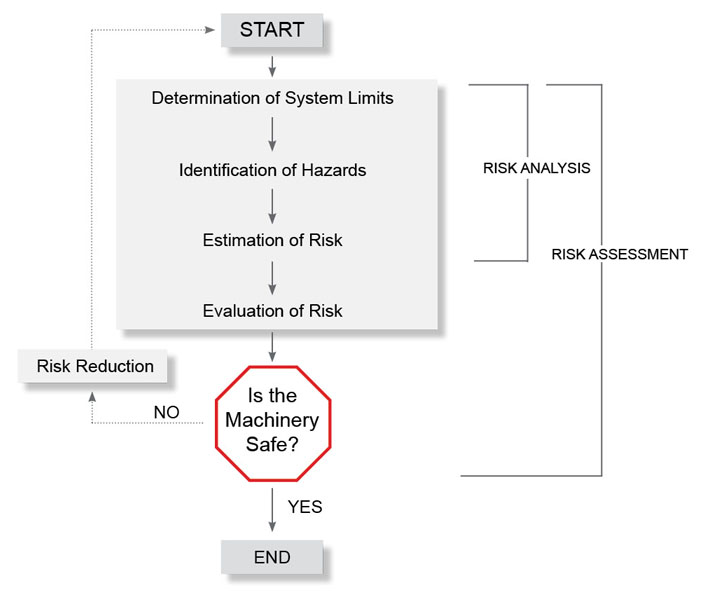
FIGURE 1: Iterative Process to Achieve Safety
Assessing Risk to Achieve Workplace Safety
To achieve a safe working environment risk assessment is performed. The logical process to be followed to insure the elimination of hazards associated with machinery is shown in Figure 1.
Risk assessment involves:
- Risk analysis (Determination of machinery limits, identification of hazards, estimation of risk)
- Risk Evaluation
When the analysis and evaluation is completed judgements can then be made on the safety of machinery.
Safety Zones: Reaching (AS 4024.1801)
Selecting an appropriate safety distance for reaching upwards or over protective structures should be based on the conclusions of the risk assessment conducted. The risk assessment is based on the foreseeable probability of the an injury occurring and the severity of that injury.
Reaching upwards
Low risks are identified by the height of the danger zone (h) being more than 2500mm.
High risks are identified by the danger zone (h) being 2700mm or more.
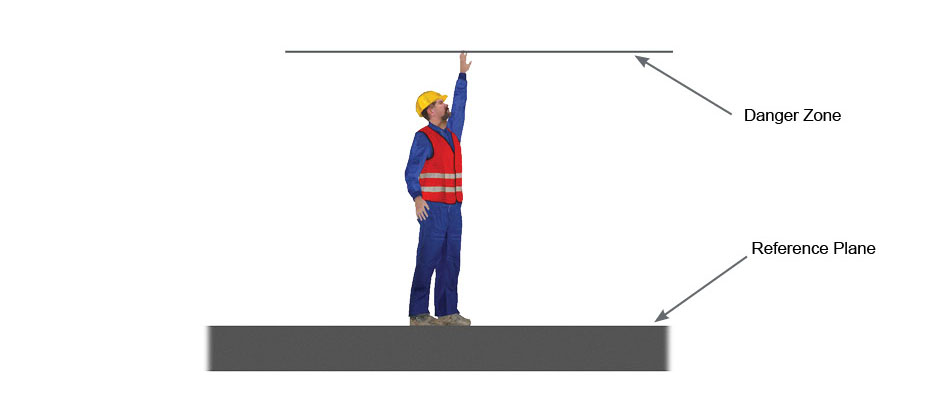
FIGURE 2: Danger Zone - Reaching Upwards
Reaching over protective structures
The relationship between points a, b and c are used in determining the safety distance when reaching over protective structures. The Table 1 (Tab: High Risk Distances) indicates the appropriate distance in relation to the relationship of the three points.
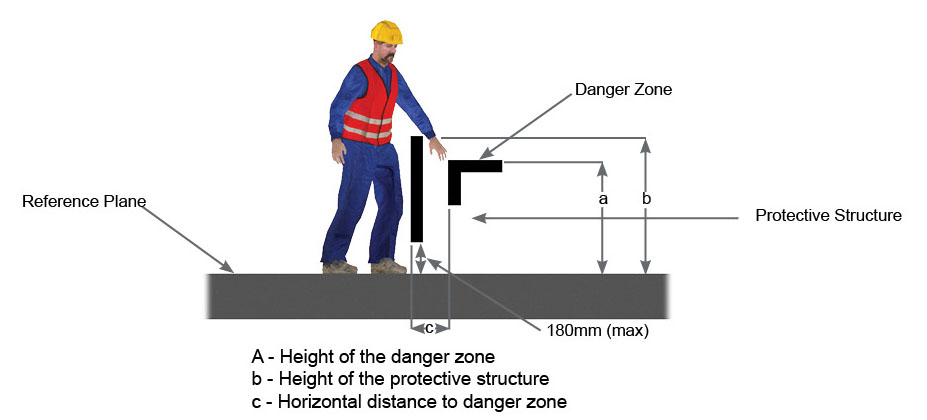
FIGURE 3: Danger Zone - Reaching Over
High Risk Reach Over Safety Distances
If either values a, b or c are between two values in Table 1 then the value giving the higher level of safety should be used.

- Protective structures less than 1000mm in height are not included because they do not sufficiently restrict movement of the body, or toppling over the structure.
- Protective structures lower than 1600mm should not be used without additional safety measures.
- For danger zones above 2700mm, either the height of the danger zone must be ≥ 2700mm or additional safety measures are to be used.
TABLE 1: Safety Distances where High Risk Exists
Example:
If the height (a) of the danger zone is 1500mm and the horizontal distance of the protective structure from the danger zone (c) is 700mm then the height of the structure must be 1800mm.
This graphic shows hazard location relative to the height of the protective structure when reaching over the protective structure. This graphic does not apply to reaching under the guarding.
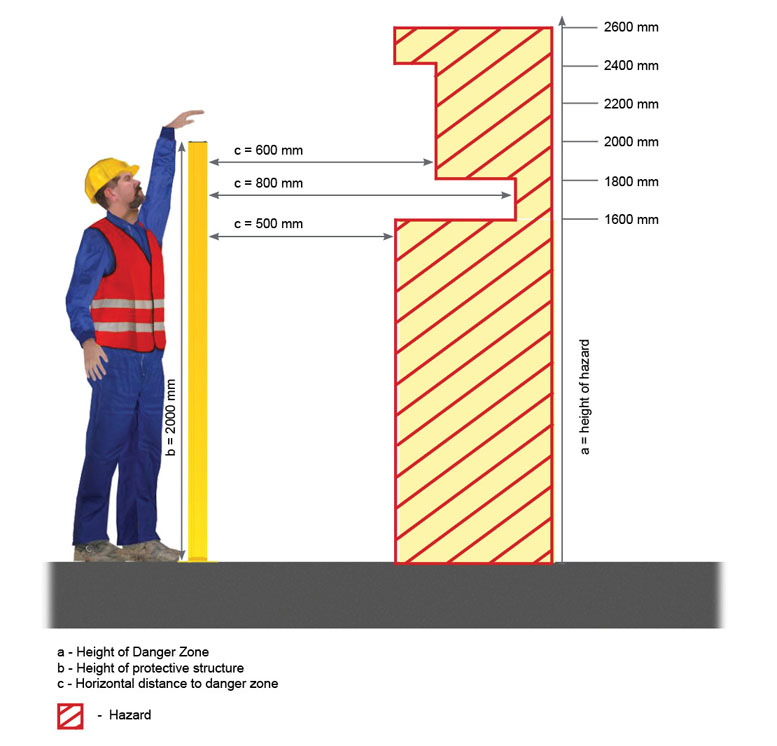
Low Risk Reach Over Safety Distances
If either values a, b or c are between two values in Table 2 then the value giving the higher level of safety should be used.
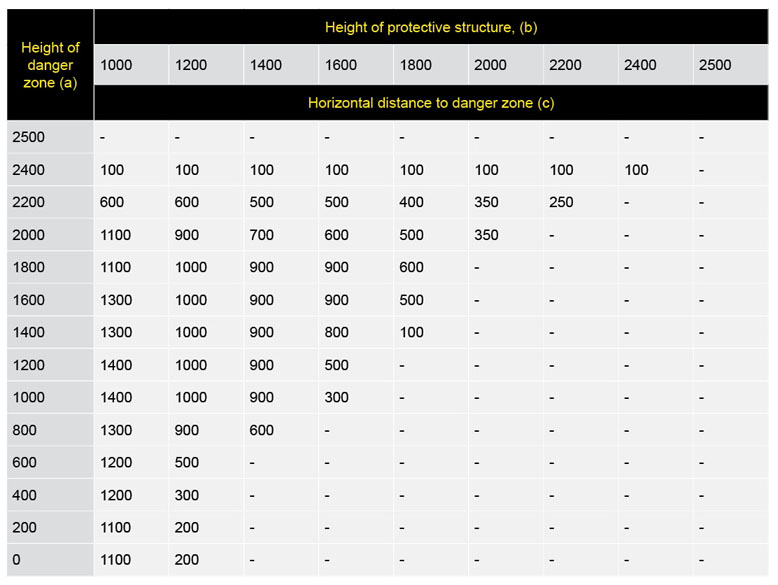
- Protective structures less than 1000mm in height are not included because they do not sufficiently restrict movement of the body, or toppling over the structure.
- For danger zones above 2500mm the height of the danger zone must be ≥ 2500mm.
TABLE 2: Safety Distances where High Risk Exists
Example:
If the height (a) of the danger zone is 1500mm and the horizontal distance of the protective structure from the danger zone (c) is 700mm then the height of the structure must be 1800mm.
This graphic shows hazard location relative to the height of the protective structure when reaching over the protective structure. This graphic does not apply to reaching under the guarding.
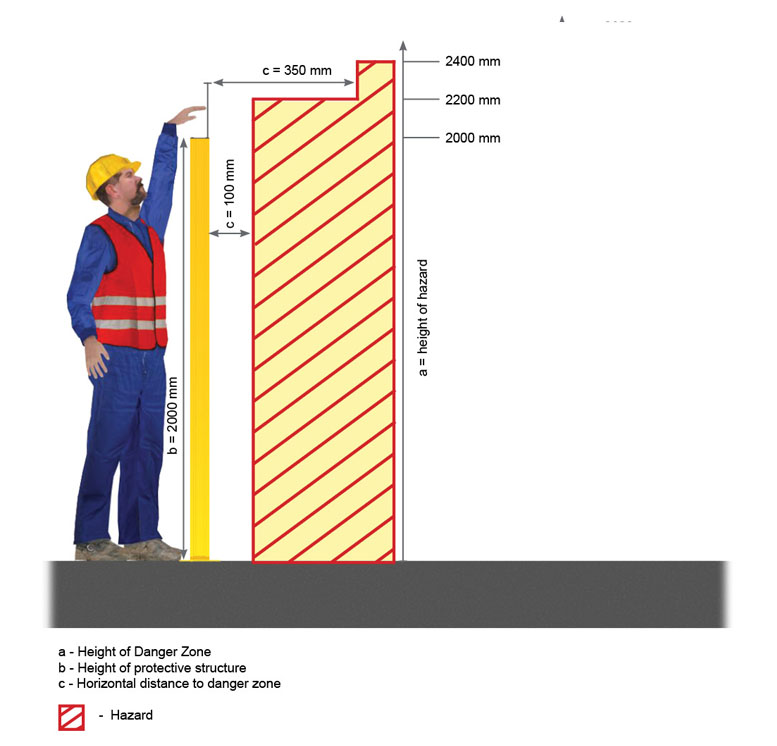
Minimum Gaps to Avoid Crushing (AS 4024.1803)
Crushing zones are characterised by hazards in which persons are exposed to a crushing hazard. Crushing hazards are generated it either two moving parts are moving towards one another or one moveable part is moving towards a fixed part.
| Part of Body | Minimum Gap, a (mm) | Illustration |
| Body | ≥ 500 | 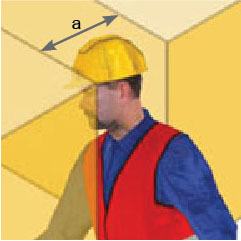 |
| Head | ≥ 300 |  |
| Leg | ≥ 180 | 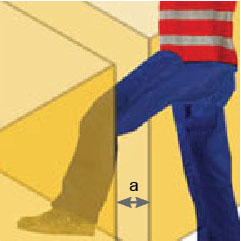 |
| Foot | ≥ 120 | 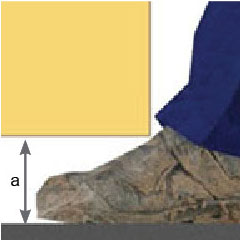 |
| Toes | ≥ 50 | 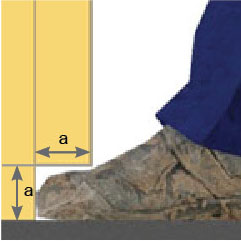 |
| Arm | ≥ 120 | 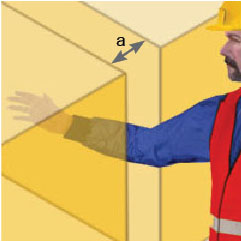 |
| Hand
Wrist Fist |
≥ 100 |  |
| Finger | ≥ 25 | 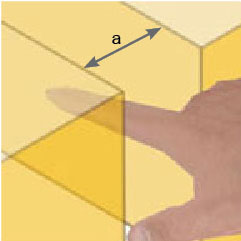 |
a - Gap between the two moving parts, or one moving and one fixed part.
TABLE 3: Safety Distances to avoid crushing zones
Reaching through openings
Table 4 shows the safety distances for reaching through protective structures. For openings more than 120mm safety distances for reaching over protective structures is to be used. Slot openings less than 65mm the thumb serves as a stopper and the safety distance can then be reduced to 200mm.
| Part of Body | Illustration | Opening | Safety Distance (sr) | ||
| Slot | Square | Round | |||
| Finger tip |  |
e ≤ 4 | ≥ 2 | ≥ 2 | ≥ 2 |
| 4 < e ≤ 6 | ≥ 10 | ≥ 5 | ≥ 5 | ||
| Finger up to knuckle joint or hand |  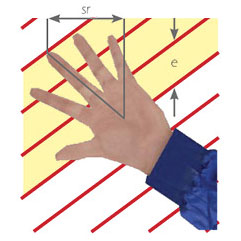 |
6 < e ≤ 8 | ≥ 20 | ≥ 15 | ≥ 5 |
| 8 < e ≤ 10 | ≥ 80 | ≥ 25 | ≥ 20 | ||
| 10 < e ≤ 12 | ≥ 100 | ≥ 80 | ≥ 80 | ||
| 12 < e ≤ 20 | ≥ 120 | ≥ 120 | ≥ 120 | ||
| 20 < e ≤ 30 | ≥ 850 | ≥ 120 | ≥ 120 | ||
| Arm up to junction with shoulder | 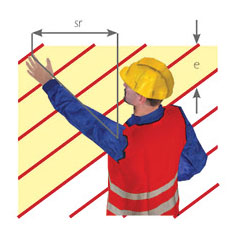 |
30 < e ≤ 40 | ≥ 850 | ≥ 200 | ≥ 120 |
| 40 < e ≤ 120 | ≥ 850 | ≥ 850 | ≥ 850 | ||
e - Side dimension of a square opening or the narrowest diameter of a slot opening
TABLE 4: Safety Distances for reaching through openings
Reaching around openings
Table 5 show the safety distance required for reaching around openings of protective structures.
| Limitation of movement | Safety distance, (sr) | Illustration (mm) |
| Limitation of movement only at shoulder and armpit | ≥ 850 | 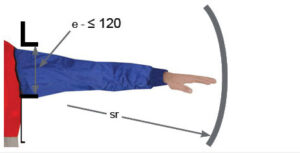 |
| Arm supported up to elbow | ≥ 550 | 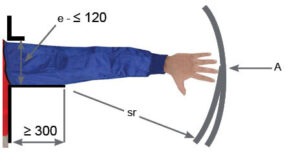 |
| Arm supported up to wrist | ≥ 230 | 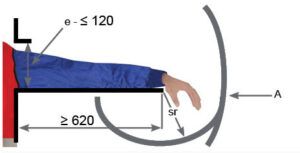 |
| Arm and hand supported up to knuckle joint | ≥ 130 | 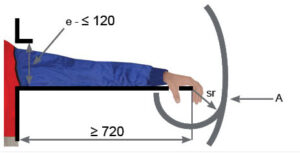 |
A - Range of the movement of the arm.
e - Diameter of round, square or slot opening.
TABLE 5: Safety Distances for reaching around openings
Safety Distance for Lower Limbs (AS 4024.1802)
Table 6 shows the safety distances required to prevent access by lower limbs hazards. Slot openings with dimension e greater than 180mm or square/round openings with diameters greater than 240mm are required to have access for the whole body.
| Part of Body | Illustration | Opening | Safety Distance | |
| Slot | Square or Round | |||
| Toe Tip | 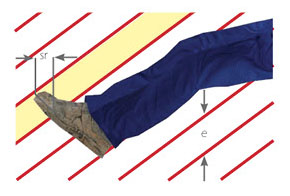 |
e ≤ 5 | 0 | 0 |
| Toe | 5 < e ≤ 15 | ≥ 10 | 0 | |
| 15 < e ≤ 35 | ≥ 801 | ≥ 25 | ||
| Foot | 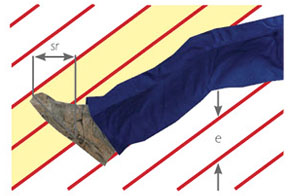 |
35 < e ≤ 60 | ≥ 180 | ≥ 80 |
| 60 < e ≤ 80 | ≥ 6502 | ≥ 180 | ||
| Leg (toe to knee) | 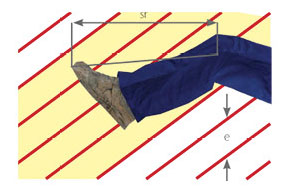 |
80 < e ≤ 95 | ≥ 11003 | ≥ 6502 |
| Leg (toe tip to crotch) | 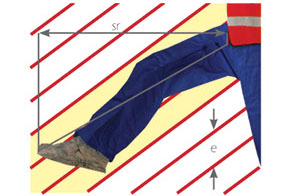 |
95 < e ≤ 180 | ≥ 11003 | ≥ 11003 |
| 180 < e ≤ 240 | not
permitted |
≥ 11003 | ||
e - side dimension of a square opening or the narrowest diameter of a slot opening
- If the slot opening is ≤ 75mm in length then the distance can be reduced to ≥ 50mm.
- Value corresponds to the Leg, toe tip to knee.
- Value corresponds to Leg, toe tip to crotch.
TABLE 6: Safety Distances for Lower Limbs

















